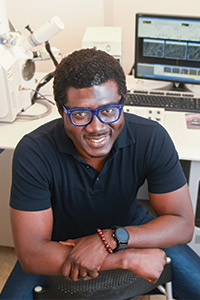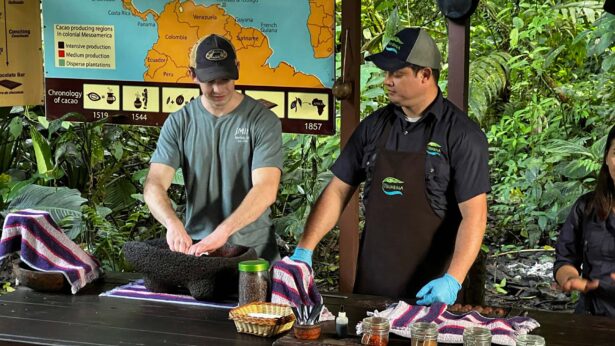Making your customers sick when they eat your food is not a good marketing plan.
But finding out whether a contaminant is or isn’t dwelling in edibles can take so long, the customer is sick before you even know there’s a problem.
To test for safety, food manufacturers take samples from the production line, send them to outside labs and wait for the results. Sometimes waiting means waiting … and waiting … and waiting. Even in-house labs can take a week to determine whether E.coli or staph or other potentially dangerous impurities are in the food.
Michael Danquah and a research team from UT Chattanooga are trying to shorten the wait period.

Danquah, associate dean in the UTC College of Engineering and Computer Science, and three university faculty members—UC Foundation Associate Professor Dalei Wu and Assistant Professor Kahlid Tantawi, both experts in mechatronics, and Henry Spratt, a professor and microbiologist—are working on new methods that give instantaneous results on whether contaminants are present in food products.
It’s a two-pronged approach.
“The monitoring process is not going to be based on a single approach,” Danquah says. “We are going to use a multimodal approach of monitoring, having an electrochemical component and also an optical component.”
The team has received a $600,000 grant from the National Science Foundation for research. Collaborators at UT Knoxville and Virginia Commonwealth University received $150,000 of the funding, Danquah said.
“This is actually going to fill a gap in the industrial operation and make the industry a better, more robust, more rapid, real-time way of assessing pathogens,” Danquah says.
The No. 1 goal is to make food safer for the public, but the new testing methods also will save money for the companies, preventing expensive recalls on their products, he says.
The first step in the research is developing a unique probe with a biological molecule—called an aptasensor—that will bond with proteins on the surface of the pathogen, Danquah explains. The connection creates an electrochemical reaction that is picked up by the probe. An alert signal is immediately sent to monitoring equipment over a wireless network.
“We can use a lot from that kind of signal,” Danquah says.
In the second detection method, the probe is able to “see” light from the electrochemical reaction.
“The biochip will have a glass surface, so immediately when there is a binding to the surface protein, we can monitor that as well,” Danquah says.
The NSF grant runs for three years, he says, and the hope is to develop a prototype of the aptasensor, which may lead to more grants to continue the research.
Danquah also hopes the food-processing industries will be interested in the research.
“The beauty of having the industry involved is they can also help us to test the technology as we develop it.”



